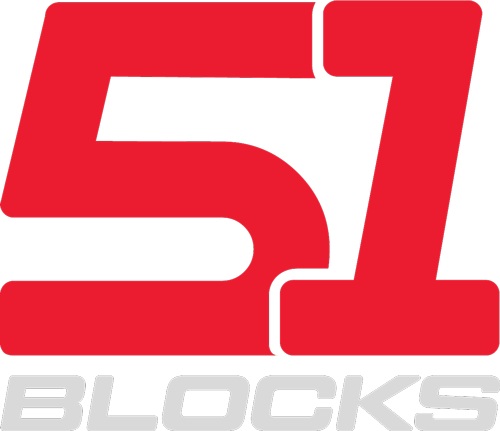Looking to streamline your agency’s digital asset management? With the ever-growing volume of digital content, it’s crucial to have a solid system in place.
These 13 key tips will help you effectively organize, track, and utilize your digital assets. From establishing a centralized system to implementing backup plans, each tip is designed to optimize your workflow and ensure smooth collaboration.
By following these guidelines, you can enhance efficiency, reduce redundancy, and maximize the value of your digital resources.
Whether you’re a small creative agency or a large marketing firm, these tips will empower you to take control of your digital assets and elevate your agency’s productivity.
Key Takeaways
- Familiarize yourself with the concept of digital assets and the importance of metadata in digital asset management.
- Establish clear strategic objectives for managing digital assets and align them with overall business goals.
- Centralize your asset management system, streamline access to digital assets, and implement version control for easy retrieval and collaboration.
- Standardize metadata, automate processes for adding metadata, and provide training on accurate and consistent metadata application to ensure organization and searchability of digital assets.
Understanding Digital Assets
You need to familiarize yourself with the concept of digital assets to effectively manage them within your agency. Understanding metadata is crucial when it comes to digital assets. Metadata is the descriptive information embedded within digital files that helps in their identification, organization, and management. It includes details such as the date of creation, author, file type, and keywords. By understanding metadata, you can efficiently categorize and retrieve digital assets, saving time and resources in the long run.
To effectively manage your digital assets, you also need to employ effective organization strategies. This involves creating a logical folder structure, using consistent naming conventions, and implementing metadata tags. A systematic approach to organizing your digital assets ensures that they’re easily accessible and reduces the risk of misplacement or loss. For instance, you can organize files based on project names, dates, or content types. By doing so, you streamline the process of locating specific assets when needed.
Now that you have a grasp of the importance of understanding metadata and employing effective organization strategies, you can begin defining asset management goals. Having a clear set of goals will guide your agency in establishing protocols for acquiring, storing, organizing, and retrieving digital assets. It will also ensure that your digital asset management practices align with your agency’s overall objectives.
Defining Asset Management Goals
When it comes to digital asset management, it’s crucial to establish clear strategic objectives that align with your agency’s overall business goals.
By defining these goals, you’ll be better positioned to measure performance and ensure that your efforts are driving tangible results.
Consider incorporating measurable performance indicators to track the effectiveness of your asset management strategies.
Clear Strategic Objectives
To achieve successful digital asset management, it’s crucial to clearly define your agency’s strategic objectives for managing assets. Strategic planning plays a vital role in ensuring that your digital assets are effectively utilized to achieve your agency’s goals. By setting clear strategic objectives, you can align your digital asset management efforts with the overall mission and vision of your agency.
This involves identifying key performance indicators, defining target audiences, and outlining specific goals for asset optimization. Strategic objectives also help in prioritizing resources and efforts towards the most impactful digital assets. By establishing these objectives, you can ensure that your digital asset management aligns with the broader strategic direction of your agency, ultimately contributing to its overall success.
Now, let’s delve into the next crucial aspect: aligning your digital asset management with the broader business objectives.
Aligning With Business
Aligning your agency’s digital asset management goals with the broader business objectives is essential for maximizing the impact and value of your assets. By ensuring business alignment, you can increase efficiency and streamline processes, resulting in a more effective use of resources.
Optimizing asset utilization allows your agency to make the most of existing resources and maximize their potential, ultimately leading to cost savings and improved ROI. Additionally, aligning with business goals enables you to prioritize and focus on the most critical assets, ensuring that they contribute significantly to the overall business objectives.
This alignment fosters a cohesive and unified approach, driving the agency towards achieving its strategic goals while delivering value to the business.
Moving forward, it’s crucial to establish measurable performance indicators to gauge the effectiveness of your digital asset management strategy.
Measurable Performance Indicators
You should define specific measurable performance indicators to gauge the effectiveness of your digital asset management strategy.
Performance measurement and data analysis are crucial for tracking progress and goal achievement.
By establishing clear indicators, you can assess how well your digital assets are being utilized and whether they’re contributing to your overall business objectives.
Consider metrics such as asset usage, download frequency, user engagement, and content performance to gain insights into the effectiveness of your digital asset management.
Analyzing these metrics will help you make informed decisions about optimizing your asset management strategy and improving the overall performance of your digital assets.
As you move forward, it’s essential to ensure that your performance indicators align with your overarching business goals and objectives.
This will set the stage for establishing a centralized system to streamline your digital asset management processes.
Establishing a Centralized System
When establishing a centralized system for digital asset management, start by identifying all existing digital assets across your agency. This step is crucial in creating a comprehensive inventory of all the files, documents, and media that need to be managed. Once you have a clear understanding of what digital assets your agency possesses, you can proceed with establishing a centralized system. Here’s how to do it:
- Streamline Access: By centralizing access to digital assets, you ensure that everyone in your agency can easily locate and retrieve the files they need. This promotes efficiency and reduces the time spent searching for specific assets, ultimately enhancing productivity.
- Facilitate Collaboration: A centralized system fosters efficient collaboration among team members. When everyone can access and work on the same set of digital assets, it promotes seamless teamwork, idea sharing, and collective input, leading to better outcomes for projects.
- Enhance Security: Centralizing digital asset management allows for better control and security measures. You can implement access permissions and encryption protocols to safeguard sensitive assets, reducing the risk of unauthorized access or data breaches.
Implementing Version Control
To effectively manage digital assets, ensure that all team members are utilizing the most current versions of files by implementing a robust version control system. Version control is crucial for keeping track of changes in digital assets. It allows for seamless collaboration and prevents errors that can arise from working on outdated files. By utilizing version control, teams can easily track the history of changes made to assets, revert to previous versions if needed, and avoid confusion over which version is the most up-to-date.
Metadata management plays a key role in effective version control. By including metadata such as date of creation, author, and a brief description of changes made, it becomes easier to track the evolution of assets. This information is invaluable for understanding the context behind revisions and ensuring that the most recent version is being used. Additionally, implementing a clear naming convention for files and folders further enhances file tracking and version control.
Asset revisions are an integral part of version control. Each revision should be clearly documented, and team members should be trained on how to effectively manage and track revisions. This includes understanding how to compare different versions, merge changes, and communicate updates to the team.
Ensuring Metadata Consistency
To make sure all your digital assets are easily searchable and organized, it’s crucial to standardize your metadata.
By automating the process of adding metadata to your files, you can ensure consistency and save time.
Providing training to your team on how to accurately and consistently apply metadata will help maintain the integrity of your digital asset management system.
Metadata Standardization Importance
Standardizing metadata is essential for ensuring consistency and organization in your agency’s digital asset management system. Metadata enrichment and data governance play a crucial role in maintaining the integrity and usefulness of your digital assets.
By standardizing metadata, you ensure that all assets are properly categorized and tagged, making it easier for your team to locate and utilize them effectively. Consistent metadata also facilitates content categorization and supports a solid information architecture, enhancing the overall user experience and enabling efficient asset retrieval.
Moreover, standardized metadata promotes data governance by establishing clear guidelines for asset management, reducing the risk of errors and mismanagement.
Ultimately, investing in metadata standardization is a proactive approach that yields long-term benefits for your agency’s digital asset management practices.
Automation for Metadata
You can streamline metadata consistency through automated processes. Implementing metadata automation solutions offers various benefits for your agency’s digital asset management.
Automation not only saves time but also ensures that metadata is applied consistently across all assets. By automating metadata processes, you can reduce the risk of human error and ensure that all assets are properly tagged and categorized. This not only improves searchability but also enhances the overall organization of your digital asset library.
Additionally, automation benefits extend to the maintenance of metadata, ensuring that updates and changes are efficiently applied throughout your asset management system. By investing in metadata automation solutions, you can significantly improve the efficiency and accuracy of your agency’s digital asset management processes.
Training for Consistency
Implement a structured training program to ensure consistent application of metadata across all digital assets. Consistency training is crucial for effective metadata management and content classification. By engaging employees in comprehensive training, you can foster a shared understanding of metadata standards and best practices. This will lead to a more cohesive approach to metadata application, ensuring that all digital assets are accurately tagged and easily retrievable.
Training sessions can also serve as a platform for employees to provide input and feedback, promoting a sense of ownership and accountability. Encouraging active participation and discussion during training can significantly improve employee engagement and commitment to maintaining metadata consistency.
Additionally, incorporating real-life examples and practical exercises into the training program can help employees grasp the importance of consistent metadata application in a tangible way.
Enforcing Access Controls
Enforcing access controls is essential for safeguarding digital assets and maintaining data security within your agency. By implementing access controls and user permissions, you can ensure that sensitive information is only accessible to authorized individuals. Security protocols play a crucial role in preventing unauthorized access, data breaches, and potential loss or misuse of valuable assets. It’s vital to regularly review and update user permissions to align with the principle of least privilege, granting individuals only the necessary level of access to perform their specific job functions. This helps in mitigating the risk of internal data breaches and inadvertent data exposure.
In addition to access controls, it’s important to establish robust data protection measures. This includes encryption of sensitive files, implementing multi-factor authentication, and creating audit trails to monitor user activity and access attempts. Regular security awareness training for employees is also essential to ensure that they understand the importance of adhering to access controls and security protocols.
By enforcing access controls and maintaining stringent security measures, you can protect your agency’s digital assets from unauthorized access and potential security threats. Additionally, these measures can foster a culture of accountability and responsibility among your team members when it comes to handling sensitive information.
Transitioning into the subsequent section about ‘streamlining file naming conventions’, it’s important to establish clear and consistent naming conventions to ensure easy retrieval and organization of digital assets.
Streamlining File Naming Conventions
How can you ensure that your file naming conventions are streamlined for efficient digital asset management? Improving organization and enhancing searchability through effective file naming is crucial for seamless asset management. Here are three key tips to help you streamline your file naming conventions:
- Consistency is Key: Ensure that everyone on your team follows the same naming structure. Consistent file naming makes it easier to locate assets and reduces the risk of duplication. By establishing and enforcing a standard naming convention, you can significantly enhance the organization of your digital assets.
- Use Descriptive Keywords: Incorporate relevant keywords into your file names to accurately describe the content of the asset. This practice boosts searchability and enables team members to quickly identify and retrieve the files they need. Descriptive file names also facilitate better categorization and sorting of assets within your digital asset management system.
- Avoid Special Characters and Spaces: When naming your files, refrain from using special characters or spaces. Instead, utilize underscores or hyphens to separate words within the file name. This practice contributes to better compatibility across different operating systems and ensures that the file names won’t cause any technical issues during storage and retrieval processes.
Organizing Folder Structures
When organizing your digital assets, nested subfolders can help keep everything neatly arranged and easily accessible.
Clear naming conventions for your folders will also make it simpler to find what you need quickly.
Nested Subfolders for Organization
Organizing digital asset folders into nested subfolders enhances accessibility and streamlines the management of agency resources. When creating a nested subfolder structure, consider the following:
- Efficiency: Nested subfolders help you find files faster, saving time and reducing frustration.
- Organization: A well-designed folder hierarchy improves the overall organizational structure, making it easier for team members to locate and use assets effectively.
- Consistency: By establishing a standard naming convention and folder structure, you ensure that everyone on your team can easily navigate the digital asset management system.
Clear Naming Conventions
To maintain an organized digital asset management system, label each folder with a clear and descriptive name. Naming conventions play a crucial role in effective file organization.
When creating folder structures, use names that clearly indicate the content they hold. Avoid generic terms like ‘Miscellaneous’ or ‘Other’ as they can lead to confusion and make it challenging to locate specific assets. Instead, opt for specific and intuitive names that accurately represent the contents of the folder.
Incorporate dates, project names, or other relevant identifiers to distinguish between similar folders. By implementing clear naming conventions, you streamline the process of navigating and retrieving digital assets, ultimately enhancing the overall efficiency of your digital asset management system.
Automating File Tagging
You can streamline your digital asset management process by implementing automated file tagging, improving organization and searchability. Automating efficiency through file tagging best practices can significantly enhance your workflow.
Here’s how:
- Time-Saving: By automating file tagging, you can save valuable time that would otherwise be spent manually tagging each asset. This allows your team to focus on more strategic tasks, fostering a sense of productivity and accomplishment.
- Consistency: Automated file tagging ensures a consistent application of tags across your digital assets. This consistency leads to better organization and streamlines the search process, reducing the frustration of hunting for specific files.
- Enhanced Searchability: With automated tagging, your digital assets become more searchable, making it easier for team members to find the files they need quickly. This boosts overall efficiency and minimizes the chances of assets being underutilized or misplaced.
By implementing automated file tagging, you can revolutionize the way your agency handles digital assets, creating a more efficient and organized workflow. This sets the stage for seamlessly integrating with creative tools, further optimizing your digital asset management process.
Now, let’s delve into the crucial aspect of ‘integrating with creative tools’ to maximize the potential of your digital asset management system.
Integrating With Creative Tools
Enhance your agency’s digital asset management system by seamlessly integrating it with creative tools, optimizing the utilization of your digital assets. Integrating with design software and creative collaboration tools can significantly streamline your workflow and improve the overall efficiency of your agency’s creative processes.
By integrating your digital asset management system with popular design software such as Adobe Creative Cloud or Sketch, you can enable your creative team to access and work with digital assets directly from within their preferred design applications. This eliminates the need to switch between multiple platforms, saving time and reducing the risk of errors during asset transfers.
In addition, integrating with creative collaboration tools like Slack, Asana, or Trello allows for seamless communication and project management. Your team can easily share, review, and approve digital assets within the context of their creative projects, fostering a more cohesive and collaborative work environment.
Furthermore, integrating with these tools can also provide valuable insights into asset usage, feedback, and performance, allowing for data-driven decision-making and continuous improvement of your digital asset management strategy.
By incorporating these integrations, you can empower your team to work more efficiently, creatively, and collaboratively, ultimately leading to enhanced productivity and better utilization of your digital assets.
As you optimize your agency’s digital asset management system by integrating it with creative tools, it’s essential to also implement robust backup and recovery plans to safeguard your valuable digital assets.
Implementing Backup and Recovery Plans
After integrating your digital asset management system with creative tools, prioritize implementing robust backup and recovery plans to protect your valuable digital assets from potential loss or corruption. This step is crucial to ensure the safety and availability of your files in the event of unforeseen issues.
Here are some key considerations to keep in mind:
- Data Encryption: Implement robust data encryption measures to safeguard your digital assets from unauthorized access. By encrypting your data, you add an extra layer of security, ensuring that even if your files are compromised, they remain inaccessible to unauthorized parties.
- Disaster Recovery: Prepare for the unexpected by creating a comprehensive disaster recovery plan. This plan should outline the steps to be taken in the event of a data loss or system failure, ensuring that you can quickly recover and restore your digital assets with minimal disruption to your operations.
- Cloud Storage and Data Retention: Leverage cloud storage solutions to securely store your digital assets off-site. Additionally, establish clear data retention policies to determine how long different types of files should be stored and when they should be securely disposed of, helping you manage storage costs and compliance requirements effectively.
Conducting Regular Audits
Once implementing backup and recovery plans, continue to ensure the security and integrity of your digital assets by conducting regular audits of your digital asset management system. Regular audits are essential to maintaining data security and compliance with regulations. By conducting these audits, you can identify any vulnerabilities or non-compliance issues and take proactive measures to address them.
Data security is of utmost importance when it comes to digital asset management. Regular audits help in uncovering any potential security gaps or weaknesses in your system. By identifying these vulnerabilities, you can take immediate steps to rectify them and safeguard your digital assets from potential threats.
Moreover, compliance regulations are constantly evolving, and it’s crucial to ensure that your digital asset management system adheres to these regulations. Conducting regular audits allows you to assess the system’s compliance status and make any necessary adjustments to ensure that you’re meeting all the required standards.
In addition to identifying security and compliance issues, regular audits also enable you to assess the overall performance of your digital asset management system. By evaluating the system’s efficiency and effectiveness, you can make informed decisions about potential enhancements or upgrades to better meet the needs of your agency.
Training and Onboarding Processes
To ensure successful implementation of your digital asset management system, establish thorough training and onboarding processes for all staff involved. Effective onboarding best practices and training development strategies are essential for maximizing the potential of your digital asset management (DAM) system. Here are key tips to facilitate smooth onboarding and training processes:
- Personalized Training: Tailor training sessions to the specific roles and responsibilities of your staff. This personalized approach ensures that each employee understands how to use the DAM system in their daily tasks, promoting confidence and proficiency.
- Interactive Workshops: Incorporate interactive workshops and hands-on exercises into your training program. This approach allows employees to engage with the system directly, fostering a deeper understanding of its features and functionality.
- Continuous Support: Implement ongoing support mechanisms, such as peer coaching or access to knowledgeable resources, to provide continuous assistance as staff members acclimate to the DAM system. This support helps employees feel valued and supported throughout their learning journey.
Frequently Asked Questions
How Can Agencies Effectively Manage Digital Assets in a Remote Work Environment?
In a remote work environment, you can effectively manage digital assets by using cloud storage for easy access and collaboration.
Optimize your workflow by setting up access controls to ensure security and organization.
Encourage remote collaboration by using digital asset management tools that allow for seamless sharing and feedback.
Keep everyone informed and productive by establishing clear processes and communication channels.
Embrace technology to make remote work easier and more efficient.
What Are Some Best Practices for Collaborating on Digital Assets With External Partners or Clients?
When it comes to collaborating on digital assets with external partners, effective remote management and team communication are key.
Sharing access to a centralized digital asset management platform, setting clear guidelines for file organization, and using version control tools can streamline collaboration.
Regular check-ins and feedback loops help maintain alignment and ensure that everyone stays on the same page.
How Can Agencies Ensure the Security and Privacy of Their Digital Assets, Especially When Sharing Them With External Parties?
To ensure security and privacy when sharing digital assets, you should implement robust security protocols and access control measures. Use encryption methods to safeguard sensitive data and limit access to authorized personnel.
When sharing data, employ secure channels and consider using secure file-sharing platforms. By implementing these measures, you can protect your digital assets and maintain the privacy and security of your agency’s information.
What Are Some Common Challenges Agencies Face When Implementing Digital Asset Management Systems, and How Can They Overcome Them?
When implementing digital asset management systems, challenges like workflow disruption and remote collaboration can arise. Solutions include thorough training to ease the transition and utilizing cloud-based platforms for seamless remote access.
Implementation can be smoother by involving all stakeholders in the process and creating clear guidelines. By embracing these solutions, agencies can effectively address the challenges of digital asset management and ensure smoother operations for remote collaboration.
What Are Some Emerging Trends or Technologies in Digital Asset Management That Agencies Should Be Aware Of?
Want to stay ahead of the game with digital asset management? Emerging technologies like AI-driven metadata tagging and blockchain for digital rights management are worth keeping an eye on.
Cloud storage solutions offer agility and scalability, but security remains a concern. Despite this, many agencies are successfully leveraging these technologies to enhance their digital asset management.
Stay informed and explore these options to see how they can benefit your agency’s digital asset management strategy.
Final Thoughts
So, now you’re all set with your agency digital asset management! Just remember to never back up your files, ignore metadata, and let everyone in the office use different versions of the same file.
Just kidding! Follow these 13 key tips and you’ll be a digital asset management pro in no time.
Good luck and happy organizing!






